rubber band helicopter
A toy similar to this caused the Wright brothers to invent the aeroplane.
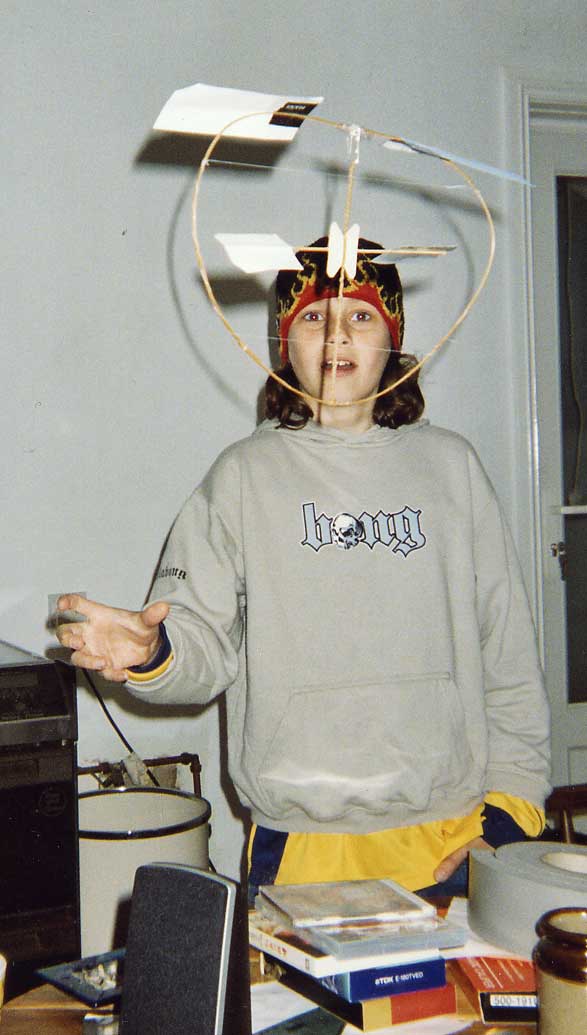
It doesn't have a bearing and is therefore very simple to make, however you must have a long bit of split bamboo which must be thin and flexible enough to bend into a loop. Some window blinds are made of suitable material, some are made of bamboo which has been extruded into a round section, this isn't really sufficiently flexible.
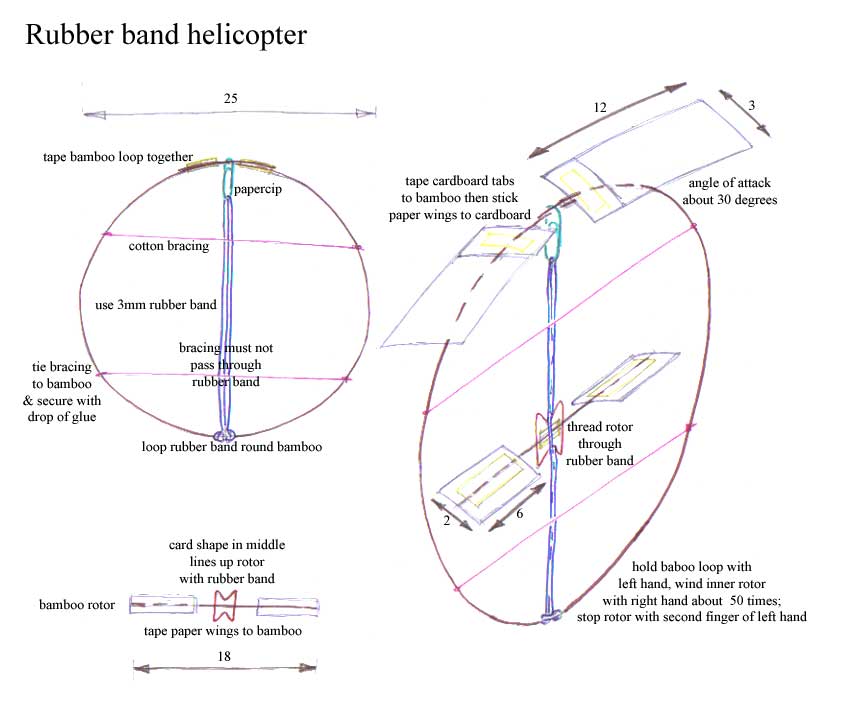
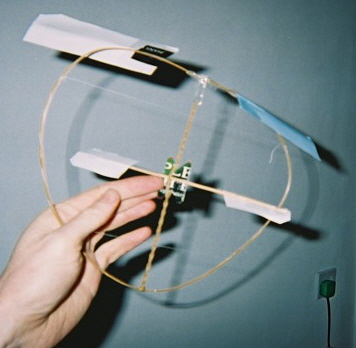
It even seems to have some inherent stability
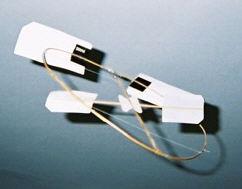
It has two bits of cotton stretched across the frame to stop the rubber band squashing it into an oval, the rotor is threaded into the rubber band, it has a cardboard butterfly to keep it aligned and to help with winding up. you can loop the rubber band round one side but you need a paper clip to hook it onto the other side.
alternative design
This is a more conventional design which can be made without a long bit of split bamboo.

This is how you make the motor
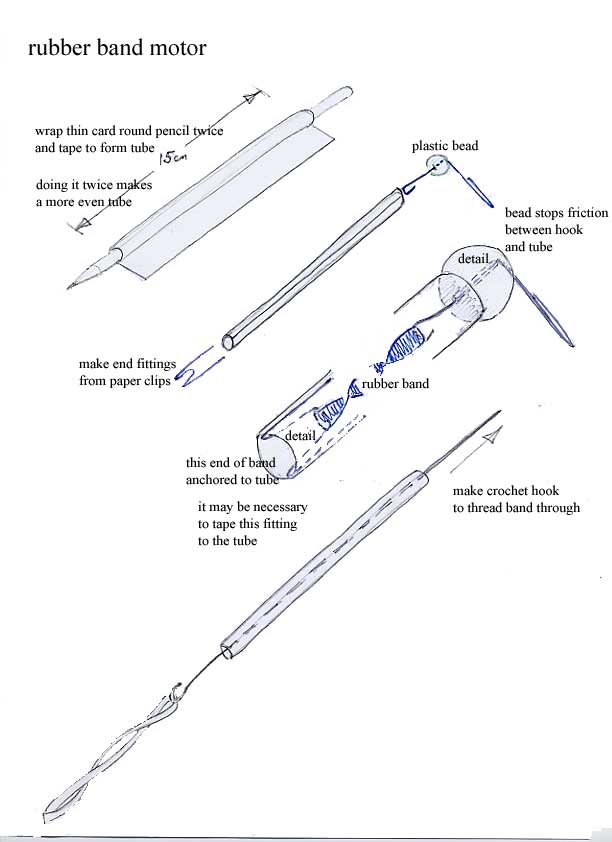
This is how you make the wings
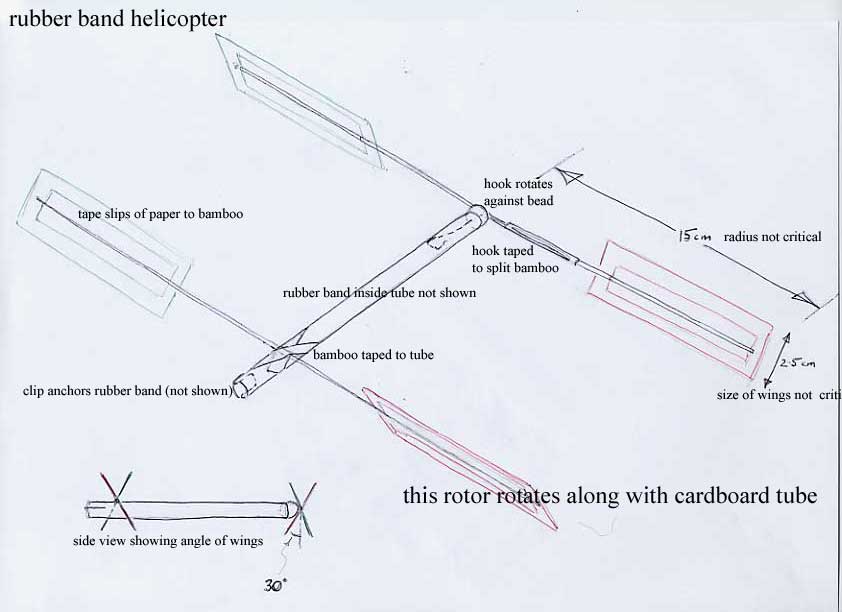
Getting the wings sloping the right way is quite confusing.
I used a bamboo window blind as a source of bamboo, drinking straws are another option.
It's quite tricky making the bent wire fittings and taping them to the bamboo; making a mobile is a good introductory excercise because you make wire hooks and tape them to split bamboo but the functionality is less demanding.
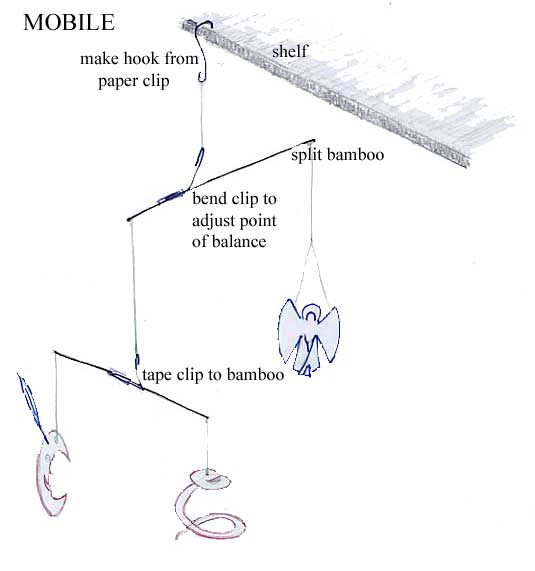
I have made the helicopters with wingspans of about 3 ft using this design: the same size paper tabs at the ends of a full length of window-blind bamboo; they work but tend to be unstable. There is a lot of scope for experimenting with the design.
This is one with fittings made from a felt-tip pen, two paperclips & a drinking straw.
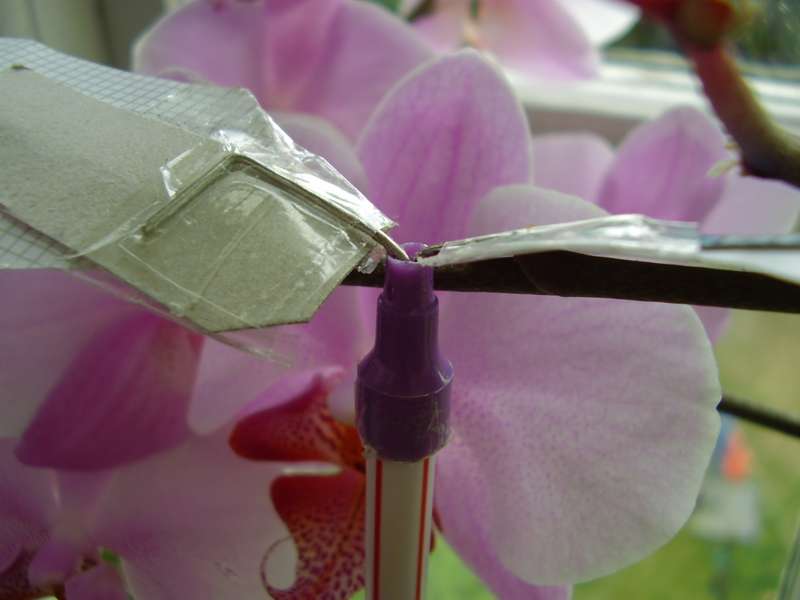
The bottom fitting is made from the plug at the end of the pen, I had to make a hole in it
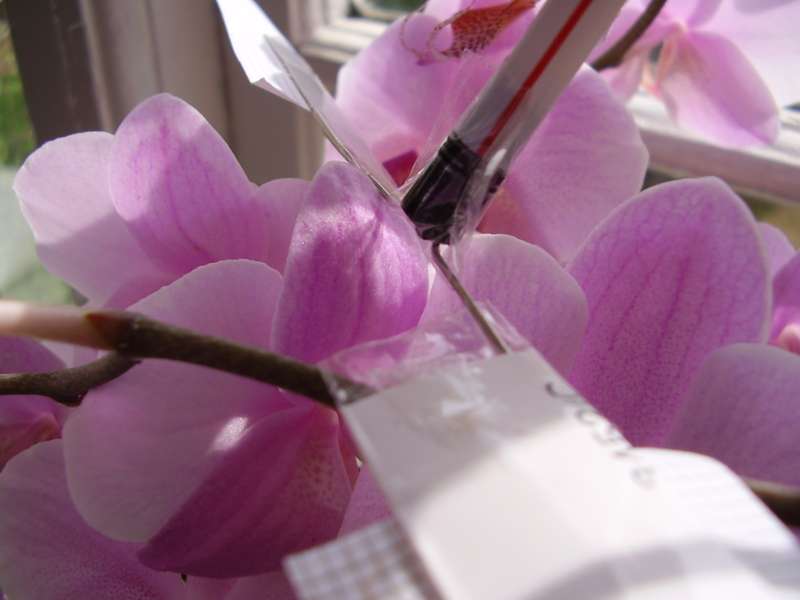
The wings are made from paper glued to bits of card, the card is taped to the paperclip. The rubber band has to fit down the drinking straw.
This is an ornithopter powered by a bamboo cane running through a tube made of drinking straws; to make the wings flap the cane is pushed & pulled within the tube from the lower end
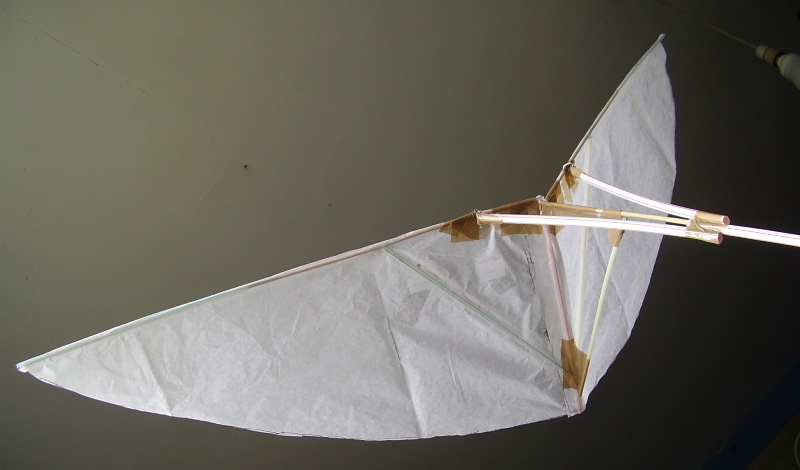
Because the ornithopter is so light you can sense the lift of its wingbeats through your fingers as you push & pull the cane
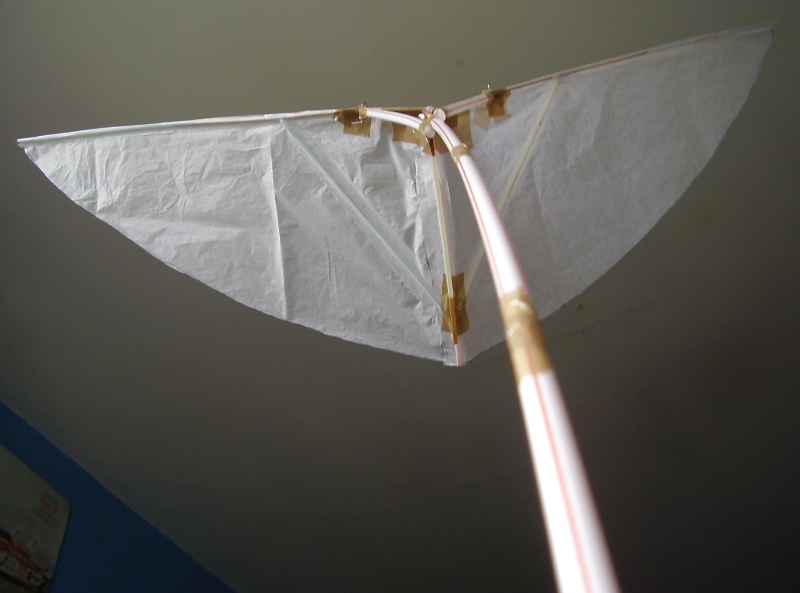
This is quite a good way of transmitting power. You also have a limited amount of directional control through the hand manipulating the tube. I think this idea could have quite a lot of scope by adding a bell crank
for instance so that it flies at right-angles to the cane. Or make it larger. Or simplify it much further, so that young children could make it. Even if it lost most of its functionality but could still flap I think it might be useful.
movie
YouTube
giant helium-filled ornithopter
chinook in ground resonance
different approach
teeny weeny rc helicopter
try a balloon powered one
do we
really need helicopters
GEN H-4
my email is davidvwilliamson@hotmail.com
back to main site











